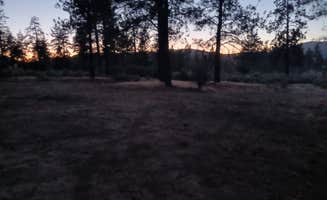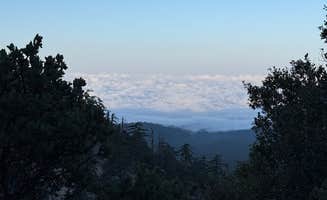Dispersed camping near Oceanside, California provides rustic outdoor experiences in the San Bernardino National Forest, with most sites located at higher elevations between 4,000-7,000 feet. These primitive camping areas require self-sufficiency and careful planning. Most locations sit among pine, oak, and manzanita forests that offer cooler temperatures than the coastal regions, typically 10-15 degrees lower during summer months.
What to do
Hiking access: The Chinouapin Zone offers proximity to several hiking trails including the Pacific Crest Trail. One camper noted, "This is a unique spot to camp, because you're met with people backpacking the summit and people going through the PCT! There is plenty of space along the trail and it is just a GORGEOUS area to wake up to." (Chinouapin Zone San Bernardino National Forest)
Wildlife observation: Bring binoculars for wildlife spotting at South Ridge Yellow Post Sites. "Wildlife includes deer, lizards, snakes, woodpeckers, and lots of squirrels. Mosquitoes come out at dusk—repellent is a must," reports one visitor. (South Ridge Yellow Post Sites)
Sunset viewing: Several sites offer west-facing vantage points. At Yellow Post #2, campers can take "a short walk to a west-facing boulder with expansive views of the valley." These natural lookouts provide opportunities for photography and stargazing after dark.
What campers like
Solitude and privacy: Finding secluded camping spots within driving distance of urban Southern California is highly valued. "Yellow Post #2 – San Bernardino National Forest, secluded, free, first-come-first-served tent site tucked deep in the forest near Hemet, CA," writes one camper about their experience. (Little Thomas Dispersed)
Shade coverage: The mature tree canopy at many sites provides natural protection from sun. One camper at Thomas Mountain Road described it as a "nice spot, close to road with shade from the trees." (Thomas Mountain Road)
Temperature relief: The higher elevations offer cooler camping conditions compared to coastal areas. A camper at South Ridge noted the "elevation is high enough that temperatures were very enjoyable (mid 80's)" making primitive camping near Oceanside comfortable even during warmer months.
What you should know
Mosquito preparation: Bring sufficient insect repellent for camping in forested areas. "I recommend you bring extra mosquito repellent," advised one camper at South Ridge Yellow Post Sites, while another specifically mentioned mosquitoes emerging "at dusk."
Cell connectivity: Some remote camping areas maintain surprisingly good cell service. A camper at Thomas Mountain Road reported "5G Verizon works great," which can be helpful for emergency communications despite the primitive setting. (Scissors Crossing PCT Parking)
Limited developed sites: Many dispersed areas have few formal sites. At Thomas Mountain Road, a reviewer noted "There are only 3 actual sites with fire rings, but there is plenty of room to camp without rings," indicating campers should be prepared to identify suitable clearings themselves.
Tips for camping with families
Site capacity considerations: When camping with children, check site limitations. Yellow Post #2 at South Ridge "fits up to 8 people and 2 vehicles," making it suitable for family groups while maintaining privacy.
Wildlife education opportunities: The diverse wildlife provides learning experiences for children. Bring field guides to identify the "deer, lizards, snakes, woodpeckers, and lots of squirrels" mentioned by campers at South Ridge Yellow Post Sites.
Access road assessment: Many roads leading to dispersed camping require careful navigation. A reviewer described the access road to Yellow Post #2 as "rough and rocky but doable in dry conditions with a careful 2WD," suggesting families with standard vehicles can access sites with proper planning.
Tips from RVers
Site selection for larger vehicles: Most dispersed camping areas have limited space for larger rigs. Thomas Mountain Road features "easy travel dirt roads" according to one reviewer, but space limitations mean not all areas can accommodate RVs comfortably.
Leveling requirements: Prepare for uneven terrain at most dispersed sites. Bring leveling blocks as many clearings are on natural, ungraded surfaces with rocky or uneven ground that requires adjustment for comfortable overnight parking.
Supply planning: With no amenities available, RV campers must be completely self-contained. Pack sufficient water, ensure waste tanks are empty before arrival, and bring all necessary supplies as the nearest services may be 30-45 minutes away on mountain roads.




